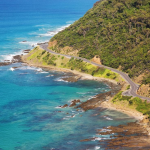Embarking on a journey to Uluru is not simply a trip; it’s an immersive experience into the heart of Australia’s outback, a significant cultural encounter, and an opportunity to witness one of the world’s most astonishing natural marvels. In this ultimate guide, we’ll cover everything you need to know for a successful visit to Uluru, from understanding its historical significance, to planning your itinerary, participating in Uluru tours for 3 days, and ensuring you travel responsibly. Let the spirit of this ancient landscape captivate your soul as you discover the unforgettable splendor of Uluru.
Understanding the Significance of Uluru

Uluru, also known as Ayers Rock, stands as a massive sandstone monolith in the heart of the Northern Territory’s arid “”Red Centre.”” Its significance transcends its physical grandeur, holding a sacred place in indigenous Anangu culture, and being recognized as a UNESCO World Heritage Site for both its cultural and natural values.
The Cultural Importance of Uluru to the Anangu People
For the Anangu, the traditional landowners of Uluru, this area is imbued with spiritual ancestors and creation stories. To the indigenous people, it is a living cultural landscape, where every crevice, rock and waterhole has a meaning. Visitors are encouraged to learn and reflect on the stories that have been passed down for generations, giving them a deeper understanding of this cultural landmark.
Uluru’s Natural Wonder
Geologically, Uluru is an inselberg, or island mountain, that stands tall above the surrounding plain. It’s formed of arkose sandstone and has an incredible ability to change color at different times of the day, notably glowing red at dawn and sunset. The area around Uluru is home to a diverse range of Australian wildlife, including many species that have adapted to the harsh desert environment.
Planning Your Trip to Uluru
A trip to Uluru requires careful planning to make the most of your visit. Whether you’re looking for a quick getaway or an extended stay in the Australian Outback, here’s what you need to consider.
Best Time to Visit Uluru
The climate in the region can be extreme, with hot summers and cold winters. The best time to visit is during the shoulder seasons, from April to June and September to November, when temperatures are more comfortable for outdoor activities. This timing also aligns with several cultural events which can add depth to your Uluru experience.
Getting There
Uluru is remote, but there are a few travel options. The nearest airport is the Ayers Rock Airport (Connellan Airport), with direct flights from major cities like Sydney, Melbourne, and Brisbane. Alternatively, you can drive to Uluru, but be prepared for a long journey through the desert.
Exploring Uluru: Activities and Tours
Exploring Uluru is an enlightening experience, offering a variety of activities to suit every traveler’s preferences. Here are some of the best ways to appreciate this majestic site.
The Uluru Base Walk
Taking a walk around the base of Uluru is an incredible way to appreciate its size and beauty. This 10.6 km loop can take 3 to 4 hours to complete. Along the way, interpretive signs will guide you through the landscape’s geology and its significance to the Anangu people.
Guided Cultural Tours
Participating in a guided tour led by an Anangu guide is an excellent way to gain insights into Uluru’s cultural history. You’ll not only learn about the rock’s creation myths but also the traditional ways of life of its indigenous people.
Other Exciting Activities
Apart from the base walk and guided tours, you can also partake in camel rides, motorcycle tours, or helicopter flights for a bird’s-eye view of Uluru. Watching sunrise and sunset are also popular activities, as the rock undergoes dramatic shifts in color.
Where to Stay Near Uluru
After considering how to arrive and what to do, securing accommodation is the next step. Uluru offers a variety of options, whether you prefer a luxurious resort or a night under the stars in a swag (traditional Australian bedroll).
Accommodations Choices Near Uluru
| Accommodation Type | Description | Price Range |
|---|---|---|
| Luxury Resorts | Premium rooms with Indigenous-themed decor | $$$$ |
| Campgrounds | Pitched tents or DIY camping spots | $$ |
| Budget Stays | Shared facilities and dorm-like lodging | $ |
Essential Tips for Visiting Uluru
Whether you’re on Uluru tours for 3 days or staying longer, there are several key tips every traveler should know.
- Purchase a park pass in advance as it is required for entry and contributes to conservation efforts.
- Bring necessities such as water, food, a medical kit, and protection against the sun.
- Respect the no-climb policy and strict photography restrictions in certain sacred areas.
The Responsible Traveler’s Code
When visiting Uluru, it’s crucial to do so responsibly, respecting the environment, the cultural heritage, and the local communities. Following eco-friendly practices and supporting indigenous businesses can help preserve the site for future generations.
How to Be a Responsible Visitor
- Respect the cultural practices and sacred areas by staying on marked paths and following all guidelines.
- Engage with local communities and purchase locally made products to support the regional economy.
- Reduce your ecological footprint by minimizing waste and using resources like water conservatively.
Conclusion
Visiting Uluru is an awe-inspiring experience that connects you with the heart of Australia’s outback and indigenous heritage. By carefully planning your trip and respecting the sacred site, you can ensure an unforgettable and culturally enriching adventure. Remember to follow eco-friendly practices and local guidelines, helping to preserve Uluru for future generations.
Unique FAQs After The Conclusion
Q1: Do I need a permit to visit Uluru?
A1: Yes, visitors are required to purchase a park pass, which contributes to the conservation of the park and provides you with entry for three consecutive days.
Q2: Can I climb Uluru?
A2: No, climbing Uluru is prohibited out of respect for the Anangu people and their culture. There are other ways to appreciate the monolith’s majesty, such as the base walk and guided tours.
Q3: What should I pack for a day trip to Uluru?
A3: You should bring plenty of water, a hat, sunscreen, sturdy walking shoes, and a camera. Also consider bringing snacks, a fly net, and a light jacket for cooler mornings or evenings.
Q4: Are there any photography restrictions at Uluru?
A4: Yes, there are certain areas around Uluru where photography is restricted to respect the cultural beliefs of the Anangu people. Always look out for and adhere to any signage regarding these restrictions.
Q5: What can I do to respect the indigenous culture while visiting Uluru?
A5: Engage with the local Anangu guides to learn about their traditions, avoid climbing the rock, stay on marked paths to protect sacred sites, and support the Aboriginal-owned businesses in the area.


